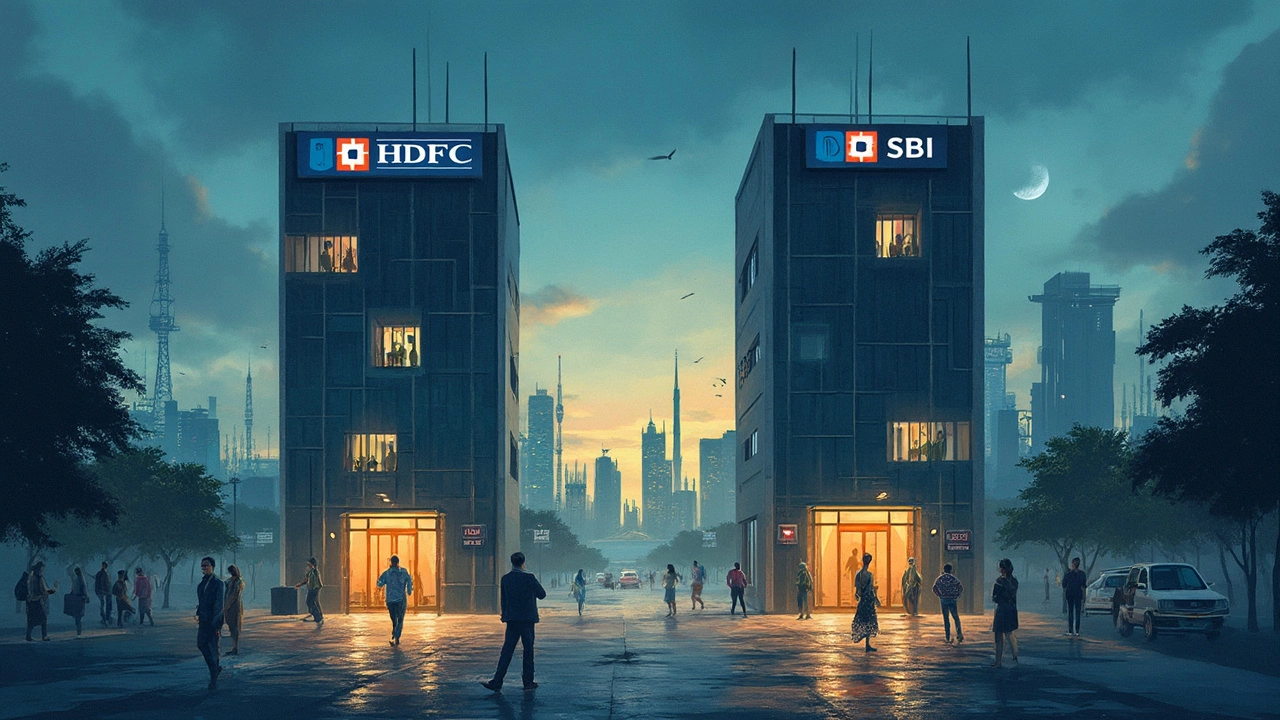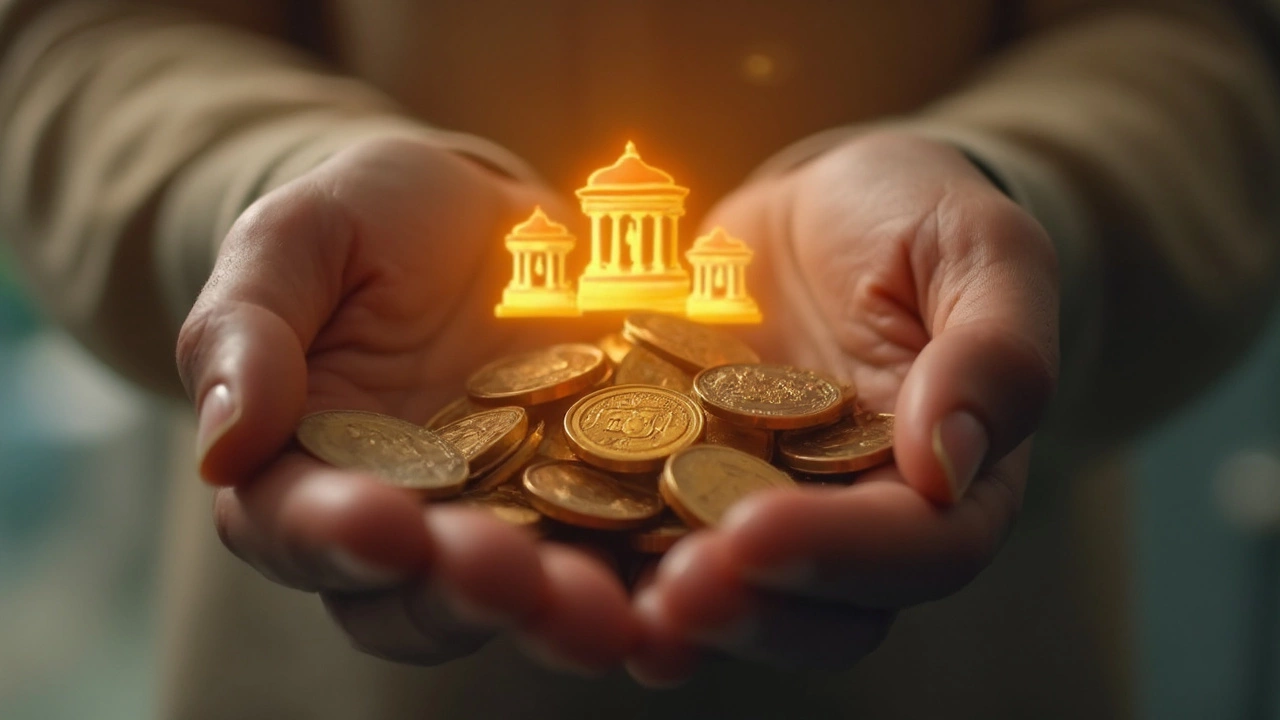Imagine checking your savings account and seeing all your hard-earned money safe and growing. But there’s always that little voice in your head: “Did I choose the right bank?” If you live in India, you’ve probably debated between heavyweights like HDFC Bank and the State Bank of India (SBI). Both are massive. Both have millions of customers. But is one really safer than the other? If you scroll through finance WhatsApp groups or overhear conversations at local tea stalls, everyone has an opinion. But let’s go beyond opinions—how do these banks actually stack up when it comes to safety?
Understanding What Makes a Bank Safe
When people talk about a bank being “safe,” what does that really mean? Surprisingly, most folks just think of their nearby branch, friendly staff, or maybe the queue length at the ATM. But bank safety goes way deeper. The real question is: can a bank survive shocks—economic downturns, scandals, bad loans? If something messes with their finances, will your money still be there? Safety also means stability, tight controls, top-notch management, government support, and how they handle your data and transactions in this digital age, not just customer service smiles.
Let’s break it down. RBI (Reserve Bank of India) regulates all banks and forces strict capital requirements. Both HDFC and SBI fall squarely under RBI’s watchful eye. Think of RBI as the protective parent who doesn't let banks go wild with your money. But beyond RBI’s rules, some banks are – by their size and government backing – “too big to fail.” That phrase gets tossed around a lot for SBI because it’s not just big; it’s a government-owned giant. On the other hand, HDFC is privately owned but known for its professionalism and tight operations, often winning awards for digital banking, efficiency, and innovation.
One key stat that really matters: the Credit Deposit (CD) Ratio. This tells you how much of their depositors’ money banks loan out. According to RBI’s latest April 2025 data, SBI had a CD ratio of about 70%, and HDFC hovered a little higher, closer to 82%. A lower ratio is usually seen as more cautious, but don’t jump to conclusions. The important thing is that both banks are well within the RBI’s acceptable range, meaning they aren’t gambling recklessly with your deposits.
| Bank | CD Ratio (%) | Gross NPA (%) | Capital Adequacy Ratio (%) |
|---|---|---|---|
| SBI | 70 | 2.7 | 14.0 |
| HDFC | 82 | 1.2 | 18.5 |
Now, flip over to bad loans (Non Performing Assets, or NPAs). High NPAs are a sign that a bank may be sitting on a pile of loans that won’t get paid back. HDFC has managed to keep its gross NPA at a stunningly low 1.2% in 2025, while SBI is at 2.7%. Old-schoolers might remember when PSU banks in India (like SBI) had NPA levels twice that. But both banks, thanks to regulatory pushes and stricter controls, are much healthier now.
Remember, safekeeping isn’t just about money. Data breaches can spell as much trouble as a loan default. According to a 2024 survey by CyberPeace Foundation, HDFC has invested heavily in cybersecurity, even winning awards for its digital security systems. SBI isn’t far behind, but its giant size and rural reach sometimes make it a bigger target for phishing and social engineering scams. That said, both banks encourage two-factor authentication and send instant SMS alerts for every transaction.
There’s also the government safety net you may have heard about: the Deposit Insurance and Credit Guarantee Corporation (DICGC) insures deposits (up to ₹5 lakh per account holder per bank as of 2025). No matter where you park your savings, this insurance kicks in. However, with banks as large and systematically important as SBI and HDFC, the risk of collapse is incredibly remote—even the failures and mergers in the past ten years only affected much smaller, lesser-known lenders.

Comparing HDFC and SBI by the Numbers and Reputation
Choosing a safe bank isn’t just about how much you trust the person at the counter. You have to look at cold, hard facts. Right now, SBI remains the biggest—India’s original titan. As of March 2025, SBI claims over 480 million customers, with total assets of ₹62 trillion. HDFC isn’t far behind in influence – its asset base stands at ₹25 trillion, with a deeply loyal urban customer base and growing reach in semi-urban centers.
Let’s talk government. SBI is majority-owned (more than 57%) by the Indian government. When people say “too big to fail,” they mean it. During tough times (think Yes Bank’s near-collapse in 2020), the government stepped in for much smaller banks, let alone something like SBI. It’d be political and economic chaos if anything serious happened to SBI, so most experts call it as close to 100% safe as you can get in Indian banking.
HDFC, on the flip side, is a private juggernaut. Its story is all about efficiency, low bad debt, digital services, and consistency. For years, HDFC has grown by being almost paranoid about quality—picky about who gets loans, sharp on costs, and keen to roll out new tech almost faster than you can keep up. In April 2025, a report by The Economic Times pointed out, "HDFC Bank's cautious management approach has been its crown jewel, setting benchmarks for digital banking across Asia."
"SBI enjoys sovereign backing—it’s the faith of a nation wrapped into a bank. HDFC is proof that private enterprise, when done right, can match public sector strength." – Aswath Damodaran, Professor of Finance, NYU Stern, quoted during his Mumbai lecture series, January 2025.
Here’s something you might not realize: HDFC’s market capitalization (the total value of its shares on the stock exchange) is now consistently higher than SBI’s. This means stock market investors back HDFC’s ability to deliver profits and steady growth—even more than the government-backed SBI. It’s a sign of reputation and faith among global investors, but it doesn’t mean more protection for your ₹1 lakh fixed deposit. It just adds another feather to HDFC’s “stable and trusted” cap.
Customer complaints? No bank is perfect. RBI’s annual report lists a few thousand complaints a year for each of these banks, mostly around digital transactions, UPI glitches, and credit card issues. HDFC customers love the clean digital interface and faster online support, while SBI’s scale sometimes means you’ll wait longer on the phone or deal with old-school procedures in smaller branches. But when it comes to fraud, both banks are in the middle of the pack—neither extremely high nor especially low—simply because they’re so large. They also refund losses quickly if the fault doesn’t lie with the customer.
What about global recognition? SBI has relationships with banks all over the world, making it easy for NRIs to manage money transfers and investments. HDFC, though newer on the international circuit, has also tied up with American and European banks for smoother foreign transactions, and tends to be faster in adopting fintech innovations.

Making Your Choice: Which is Safer for You?
All these details are great, but you just want to know—where is your cash safest? Here’s the deal: both SBI and HDFC pass every safety filter. Neither is on the RBI’s prompt corrective action watchlist. Both maintain a high Capital Adequacy Ratio—that’s basically how much buffer money a bank keeps set aside, and both beat the RBI’s required minimum of 11.5% by a mile. In fact, as per the April 2025 RBI bulletin, HDFC stands at 18.5% and SBI at 14%. Bigger is better here.
Let’s talk about risk tolerance. If the only thing that helps you sleep is knowing the government itself owns your bank, SBI is unbeatable. Depositor panic is virtually impossible, because the government - and the country’s taxpayers - are basically on the hook if anything even shakes SBI. SBI branches are everywhere, from Ladakh to the tip of Kerala, so if you move a lot or like to do in-person banking, their reach is unmatched.
If you value super-slick mobile banking, a slightly more personal touch, fewer errors in routine processes, and don’t mind a bit less physical presence in rural pockets, HDFC has you covered. For pure balance sheet safety, HDFC barely edges out SBI with a lower NPA and higher capital backup, but the real-world risk gap is so slim you probably won’t even notice. Most people looking for bank safety in 2025 should pick based on their need for service, technology, or branch access, not because one of these giants is actually “unsafe.”
- Want the best of both worlds? Open accounts in both. Diversifying is as old as investing itself. With DICGC insurance per bank, you even get double the guarantee if something as unlikely as a major collapse happens.
- Keep your contact info updated. Most failed transactions and frauds happen because SMS or email alerts aren’t reaching you.
- Always use official banking apps, not third-party interfaces, for transactions.
- If you’re parking more than ₹5 lakh, consider spreading funds across banks if you want to stay within DICGC insurance limits.
- Use features like ‘on/off’ card controls, UPI daily limits, and custom alerts for peace of mind.
Last thing: Watch for mergers and acquisitions. The Indian banking scene is constantly shifting. Smaller banks get merged into bigger ones—just look at how SBI has absorbed all its own associates in the last decade. HDFC even merged with its parent housing finance company last year. But if you’re picking between the two as they are today, you can breathe easy. Your money's not just safe—it's about as protected as anywhere in the world’s banking system can make it.
